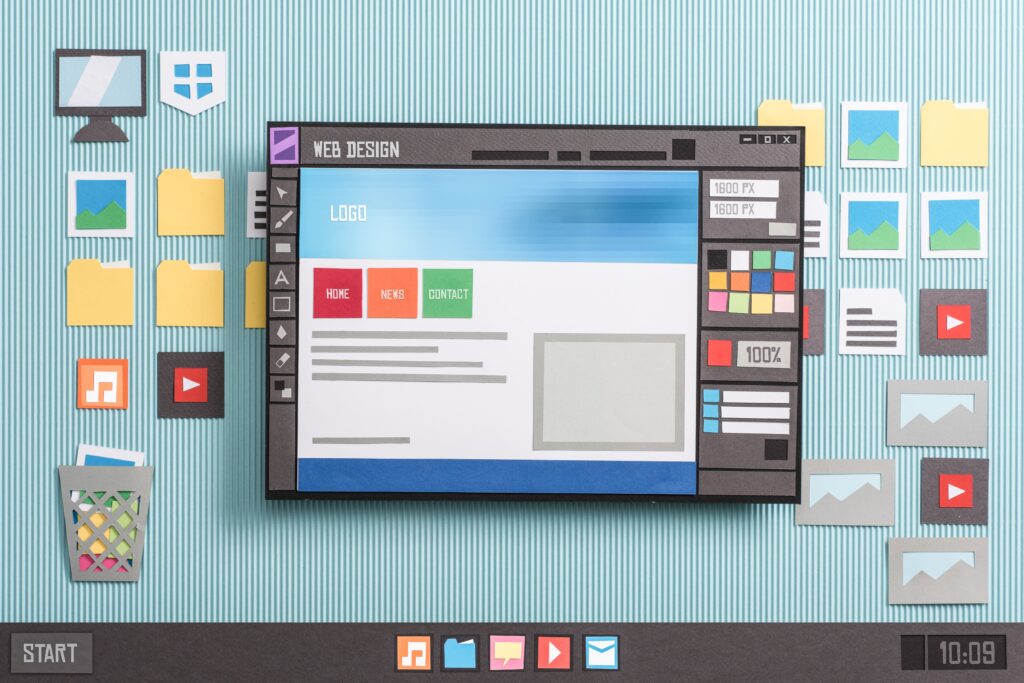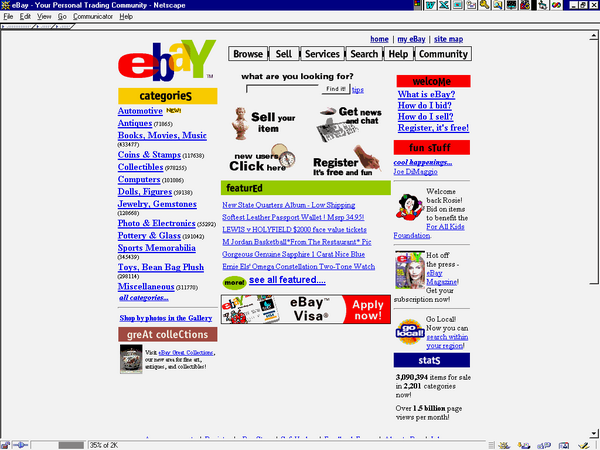The Evolution of Web Design: From Early Sites to the Present

Web design has undergone a significant transformation since its beginnings in the 1990s. Throughout this evolution, each phase has deeply influenced marketing practices. In this article, we will explore how web design has changed over time and how these changes have impacted digital marketing strategies.
1. The Early Websites
Basic and Static Design
In the early days of the web, sites were constructed using basic HTML. These websites were predominantly static, featuring simple text and graphics without significant interactivity. Consequently, most pages were made up of flat content with basic structures and a uniform format.
Limited Interactivity
At that time, interaction on websites was very limited. Users could only click on text links and view images. Furthermore, there were no complex forms or interactive tools available for visitors.
Plain Text Design
During this period, the design of websites focused on plain text with basic colors and simple backgrounds. Due to technological constraints, creativity in design was restricted, resulting in functional but visually basic sites.

2. The Introduction of Dynamic Web Design
Use of CSS and JavaScript
With the introduction of CSS in the 1990s and JavaScript in the early 2000s, web design experienced a major leap forward. CSS allowed for more advanced design customization, while JavaScript introduced interactive elements such as dropdown menus and dynamic forms. As a result, designers were able to create more visually appealing and functional websites.
Development of More Attractive Sites
The use of CSS and JavaScript led to the creation of more attractive websites. Enhanced graphics, smooth transitions, and more intuitive navigation became possible. Consequently, user experience improved, and the ability to attract and retain visitors increased.
The Beginning of Search Engine Optimization (SEO)
As the web grew, so did the importance of search engine visibility. Consequently, SEO began to take shape, with strategies focused on improving site rankings in search results. Designers started incorporating SEO practices, such as keyword optimization and content structuring.
3. The Era of Adaptive and Responsive Web Design
Emergence of Responsive Web Design
With the proliferation of mobile devices, responsive web design became a necessity. This approach allows websites to adapt to different screen sizes, providing a consistent user experience across both mobile devices and desktop computers. Therefore, implementing responsive design became a standard practice to enhance accessibility and usability.
Focus on User Experience (UX)
During this stage, user-centered design (UX) gained prominence. Designers began to focus on creating pleasant and effective user experiences. Consequently, intuitive navigation, fast loading times, and accessibility became key factors in improving user satisfaction.
Integration with Social Media
The integration of social media buttons and sharing options on websites became commonplace. This allowed users to easily share content and connect with social platforms. As a result, the reach of digital marketing expanded. Additionally, integration with social media facilitated user interaction and engagement with content.
4. The Revolution of Modern Web Design
Minimalist and Clean Design
Today, web design trends lean towards minimalism. Modern sites feature a clean design, focusing on functionality and aesthetics. White space is used to enhance readability, and visual clutter is avoided. Therefore, this approach not only improves appearance but also optimizes the user experience. The evolution of web design is truly impressive!
Use of Advanced Technologies
Current technologies, such as HTML5, CSS3, and frameworks like React and Angular, have enabled the creation of more dynamic and complex websites. HTML5 and CSS3 offer new functionalities and visual effects. Meanwhile, frameworks facilitate the development of interactive and high-performance web applications.
Optimization for Speed and Performance
In today’s context, site speed has become a crucial factor for success. Designers and developers now focus on optimizing site performance by reducing load times and improving the user experience. Techniques such as image compression and caching contribute to faster load times.
5. Impact on Digital Marketing Strategies
Focus on User Experience
The evolution of web design has led to a greater emphasis on user experience (UX). As a result, digital marketing strategies now prioritize creating intuitive and pleasant web experiences. User-centered design not only enhances satisfaction but also influences conversions and marketing performance.
Conversion Optimization
Modern web design is geared towards maximizing conversions. Techniques such as goal-oriented design, optimization of calls-to-action (CTAs), and A/B testing are utilized to improve conversion rates. Consequently, conversion optimization has become an integral part of digital marketing strategies.
Multichannel Integration
Current web design integrates with multiple marketing channels. Website data is leveraged to personalize campaigns across social media, email, and other channels. As a result, this integration allows for a cohesive and personalized marketing experience for users.
Conclusion
The evolution of web design has profoundly transformed how we interact with the web and how digital marketing strategies are implemented. From early static sites to modern interactive platforms, each stage of this evolution has enhanced user experience and influenced marketing practices. Adapting to these changes is essential to fully leverage digital opportunities today and continue providing effective and engaging web experiences.
Learn more about web design here!
